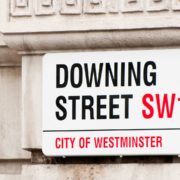Here’s a detailed analysis based on the current Consumer Prices Index including owner occupiers’ housing costs (CPIH) and its components:
Consumer Prices Index and Housing Costs
- CPIH and CPI Trends:
- The Consumer Prices Index including owner occupiers’ housing costs (CPIH) is currently at 2.8%.
- Over the past 30 years, the Consumer Prices Index (CPI) has averaged around 2.5%.
- Owner Occupiers’ Housing (OOH) Costs:
- OOH costs represent the expenses associated with owning, maintaining, and living in one’s home, excluding utility bills, minor repairs, and maintenance.
- These costs are a significant component of household expenditure and are not included in the standard CPI measure.
- Current OOH Trends:
- OOH costs are still rising, predominantly driven by increasing mortgage rates.
- This reflects higher costs for homeowners, affecting overall housing expenditure and contributing to the CPIH.
Impact of Mortgage Rates
- Mortgage Rates Influence on OOH:
- Rising mortgage rates increase monthly payments for homeowners with variable rate mortgages or those coming off fixed-rate deals, leading to higher OOH costs.
- This has a direct impact on the CPIH, as higher housing costs elevate the overall index.
Renting vs. Buying
- Financial Times Analysis:
- A recent FT Money article highlighted that renting is currently cheaper than buying a home, a trend not widely emphasized by housing advocacy groups like Generation Rent or Shelter.
- This is primarily due to the high mortgage rates making home ownership more expensive compared to renting.
Graph Analysis and Historical Context
- Long-Term Inflation Context:
- Over the past 30 years, CPI has averaged around 2.5%, indicating relatively stable inflation rates with periodic fluctuations due to economic cycles.
- The current CPIH rate of 2.8% is slightly above the long-term CPI average, suggesting a marginal increase in inflation, particularly influenced by housing costs.
Implications for Homeowners and Renters
- Homeowners:
- Rising mortgage rates increase financial pressure on homeowners, especially those with adjustable-rate mortgages or those nearing the end of their fixed-rate period.
- Higher OOH costs can strain household budgets, making it more challenging to manage overall living expenses.
- Renters:
- With renting currently being cheaper than buying, renters may find it financially advantageous to continue renting rather than entering the housing market.
- This trend could potentially lead to increased demand for rental properties, influencing rental prices over time.
Policy Considerations
- Interest Rates and Monetary Policy:
- Central banks may need to consider the impact of interest rates on mortgage costs and overall housing affordability when setting monetary policy.
- Balancing inflation control with housing affordability is crucial to ensure stable economic conditions.
- Housing Market Interventions:
- Government policies aimed at stabilizing the housing market, such as subsidies for first-time buyers or incentives for affordable housing development, could help alleviate the financial burden on homeowners.
- Measures to support renters, such as rent controls or housing benefit adjustments, could also be beneficial in the current economic climate.
Conclusion
The current CPIH rate of 2.8% reflects a slight increase over the long-term CPI average of 2.5%, primarily driven by rising OOH costs due to higher mortgage rates. This has made renting more financially viable compared to buying, a trend highlighted by recent financial analyses but not widely addressed by housing advocacy groups. Balancing inflation control with housing affordability remains a key challenge for policymakers in maintaining economic stability and supporting both homeowners and renters.
Industry comments
Tomer Aboody, director of property lender MT Finance, says: “Whereas we haven’t as yet hit the dizzy heights of the post-Covid era where houses were flying off the shelves due to stamp duty reforms, families needing more space and rock-bottom interest rates, we are seeing steady growth in values which illustrates confidence has returned to the market.
“Volumes are significantly lower than last year, but again, on a positive upwards cycle. There’s never been a better time to reform stamp duty but sadly a likely incoming Labour government doesn’t appear supportive of this.
“Hopefully some interest rate cuts in the very near future will help push the market on even more.”
Jeremy Leaf, north London estate agent and a former RICS residential chairman, says: “Today’s announcement of a fall in inflation growth and previous drops appear to have already been factored into the expectations of many homebuyers.
“A cut in base rate had also been anticipated but now there is widespread acceptance that mortgage costs will stay higher for longer.
“Although this ONS data is the most comprehensive of all the housing market price indicators, it does reflect activity when optimism was greater prior to the election announcement. That news made our buyers and sellers a little more cautious so viewings since are lower and prices softening. On the other hand we are seeing no significant withdrawals or renegotiations.”
Anna Clare Harper, CEO of sustainable investment adviser GreenResi, says: “House prices have increased in nominal terms by 1.1% in the year to April, to £281,000. However, for most younger people, this is irrelevant. Half the UK population are under 40, and for most of these, the important question is not ‘how fast are house prices increasing?’ The question is ‘can I afford to live in a decent home?’ And the answer for most is related more to regulation than to house prices.
“Regulations intended to help tenants have adverse consequences. The planned end to ‘no fault’ evictions was intended to protect the right of tenants. In fact this is one of the causes of rising evictions. Landlords, who fear they won’t be able to access their property, are evicting tenants while they can, meaning the number of under-used and empty homes is growing well over the 1 million recorded by the census in 2021, and tenants are losing their homes.
“Nothing is replacing this supply, because building new homes is slow, and potential investors are nervous about the future of housing policy under the next government.
“We have to hope that the next government can allay these fears and provide a stable environment for responsible, professional investors to provide safe, secure homes for renters, before the supply of decent, safe homes for the younger generations dries up.”
Mark Harris, chief executive of mortgage broker SPF Private Clients, says: “As expected, inflation has hit the 2 per cent target, giving the Bank of England a further nudge to start reducing interest rates. If the Bank wants to be bold, that first reduction would come this month but more likely it will be August.
“There is a sense that some buyers and sellers are waiting for the first rate reduction before taking action, so a cut this summer could really give the housing market a boost.
“Although Swap rates were already falling before the publication of the latest inflation data, mortgage pricing is fairly flat with little movement up or down. There is a sense that things are on hold until the election is out of the way. Following a somewhat challenging first half of the year, there are hopes that a post-election bounce will lead to a more promising autumn for the housing market.”
Amy Reynolds, head of sales at estate agency Antony Roberts, says: “Negotiations are becoming an ever more central part of transactions. Buyers are more price-conscious, and sellers increasingly realistic about their pricing. This dynamic has created a balanced market where negotiations are frequent but transactions remain steady.
“We are cautiously optimistic for the second half of the year. If the election results provide a clear direction, we anticipate a surge in market activity as delayed transactions are completed. Confidence in the market is likely to rebound, potentially leading to a stronger performance in the latter half of the year.
“However, we have concerns around landlords exiting the market. We are seeing an increase in landlords requesting valuations on their properties, as they prepare to sell if there is increased pressure on them from the new government.
“The fundamental demand for property remains strong. Sensible pricing and realistic negotiations are key to navigating this period successfully.”























Comments